RSVP Auto Bypass: Automating MPLS Resiliency at Scale Building
A single fiber cut. A router outage. A failed link between two cities.
It doesn’t take much to bring a network to its knees.
In traditional MPLS networks, engineers had to preconfigure backup tunnels for every possible failure scenario. This meant hours of painstaking manual work, complex configurations that looked like hieroglyphics to anyone outside the network team, and the constant risk of human error. Even when everything was configured perfectly, failover could still take several seconds — long enough to drop voice calls, disrupt video conferences, and break application sessions that users depend on.
RSVP Auto Bypass fundamentally changes this equation. It gives networks the ability to detect a failure and build a detour path automatically — within tens of milliseconds. To the end user scrolling through social media or joining a video call, the disruption becomes completely invisible. To the network operator, it represents a dramatic shift from reactive firefighting to proactive resilience.
How RSVP Auto Bypass Works:
Think about how you navigate around traffic on your daily commute. When you hit unexpected construction, you don’t sit there waiting for someone to tell you which roads to take. You automatically find an alternate route and keep moving.
RSVP Auto Bypass works similarly for network traffic. Imagine a simple backbone path flowing through your network infrastructure:
R1 → R2 → R3 → R4 → R5
When the R2–R3 link suddenly fails (maybe due to a fiber cut or equipment malfunction), traffic doesn’t sit idle waiting for engineers to manually reconfigure routes. Instead, the Point of Local Repair (PLR) at R2 instantly redirects traffic through a pre-established bypass path:
R2 → R6 → R4
Figure 1: When the R2–R3 link fails, traffic is instantly rerouted via R2–R6–R4.
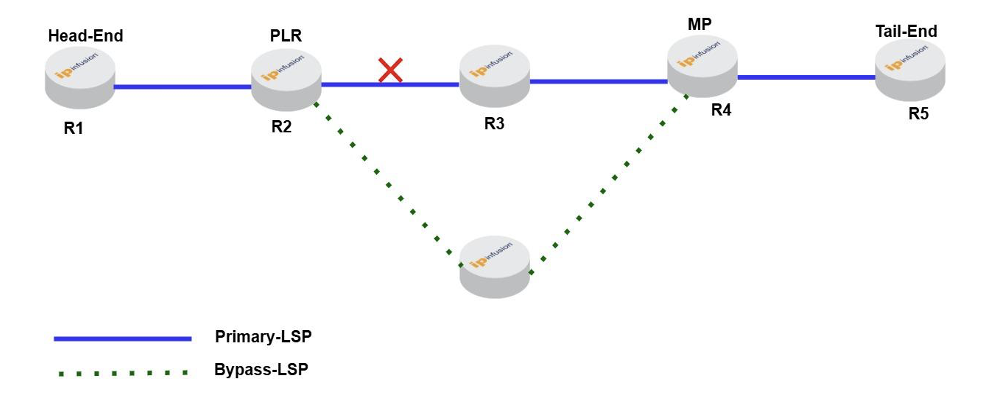
The real magic happens in how this bypass tunnel gets created. The PLR doesn’t rely on static, manually defined backup routes that network administrators spent hours configuring. Instead, it generates a bypass tunnel dynamically using RSVP signaling protocols. This process applies a dual label stack (Primary LSP label + Bypass LSP label) so data packets continue flowing smoothly through the network until they can rejoin the original primary path downstream.
Key Components of RSVP Auto Bypass:
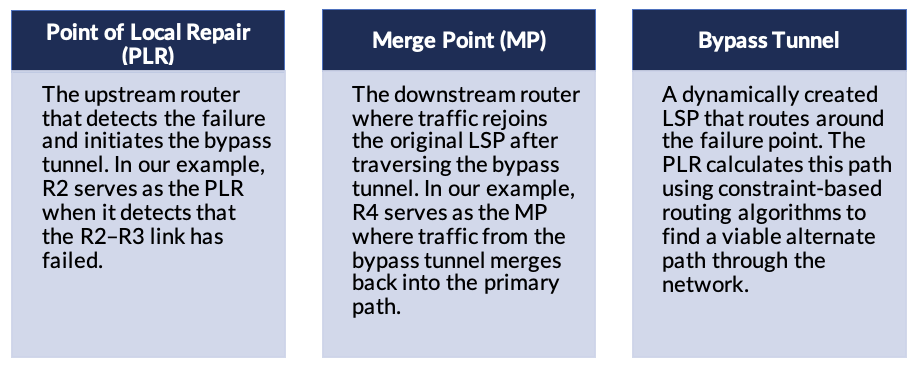
Three Critical Phases of RSVP Auto Bypass:
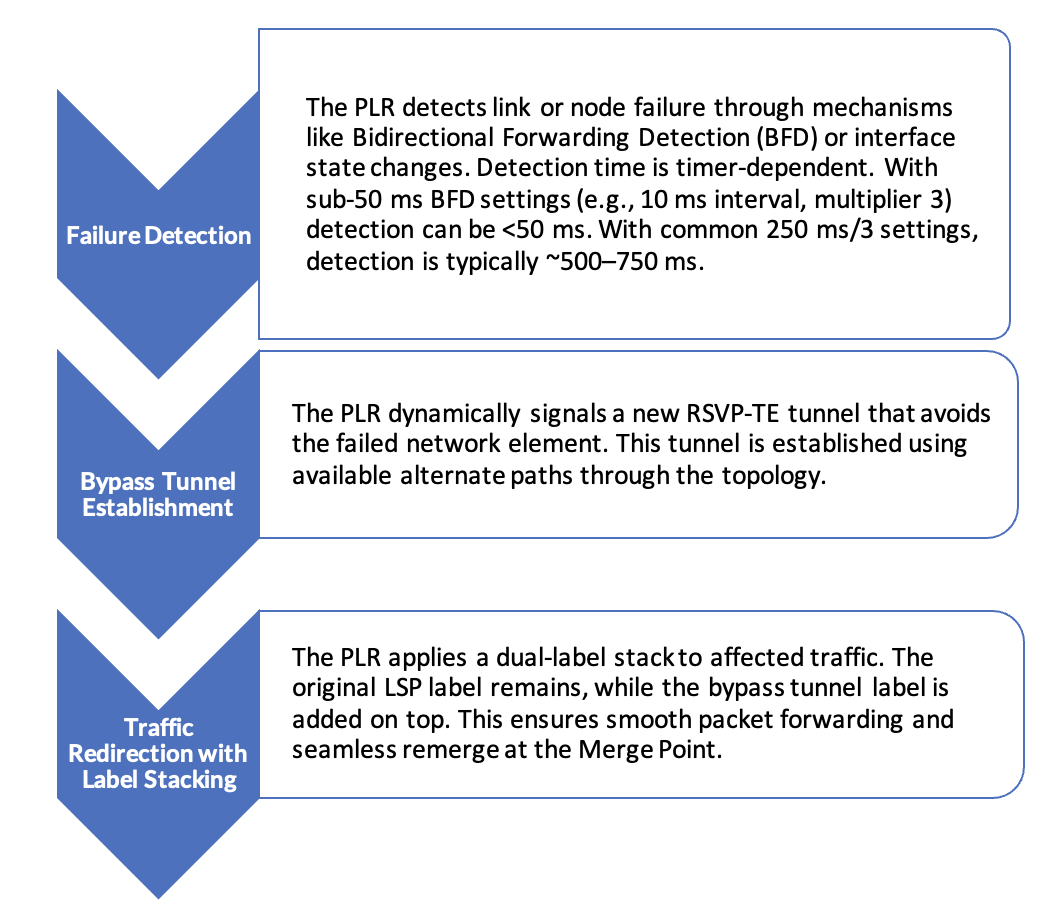
Label Stacking and Packet Forwarding:
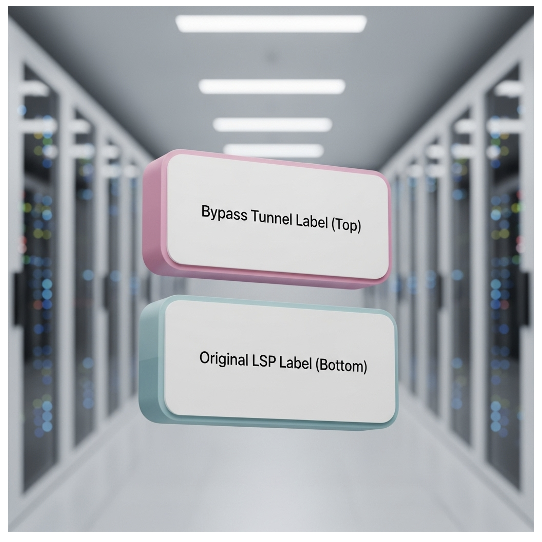
Auto-Tunnel Configuration Parameters:
While RSVP Auto Bypass dramatically reduces manual configuration, network operators still need to set key parameters to optimize its behavior. These parameters control how bypass tunnels are created, what resources they can use, and how they interact with the broader network.
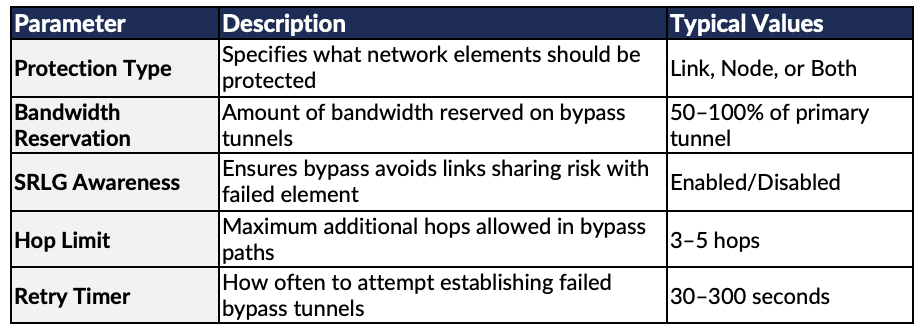
These parameters let operators tune Auto Bypass to their topology and SLAs: reserve ~50% bandwidth when capacity is tight or 100% for full-capacity protection; enable SRLG awareness to avoid shared-risk links (e.g., the same fiber) so the bypass won’t fail with the primary. With sensible values, you balance protection, performance, and resource use.
Configuration & Validation Procedure:
Configure an MPLS TE tunnel on Router-1 & Router-5, the ingress node of the primary LSP with a strict Path.
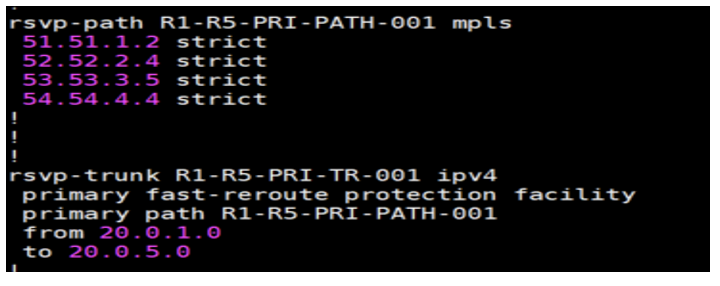
Configure auto-bypass enable under router rsvp mode.

Validation Procedure:
“Show mpls forwarding-table” command displays the RSVP Tunnel, out-label and their corresponding next-hop information installed for forwarding packets in the MPLS network.

“Show rsvp session R1-R5-PRI-TR-001” command displays the RSVP Tunnel details.
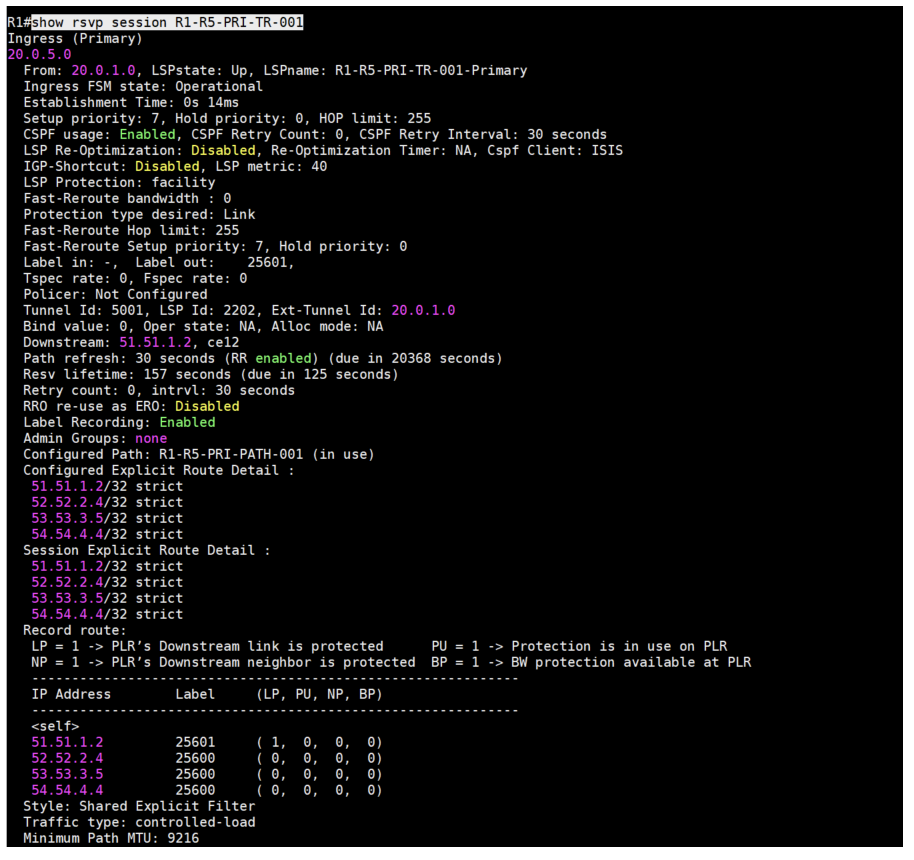
“Show rsvp bypass BL-52.52.2.4-20.0.3.0” command displays the RSVP Tunnels mapped with bypass details.
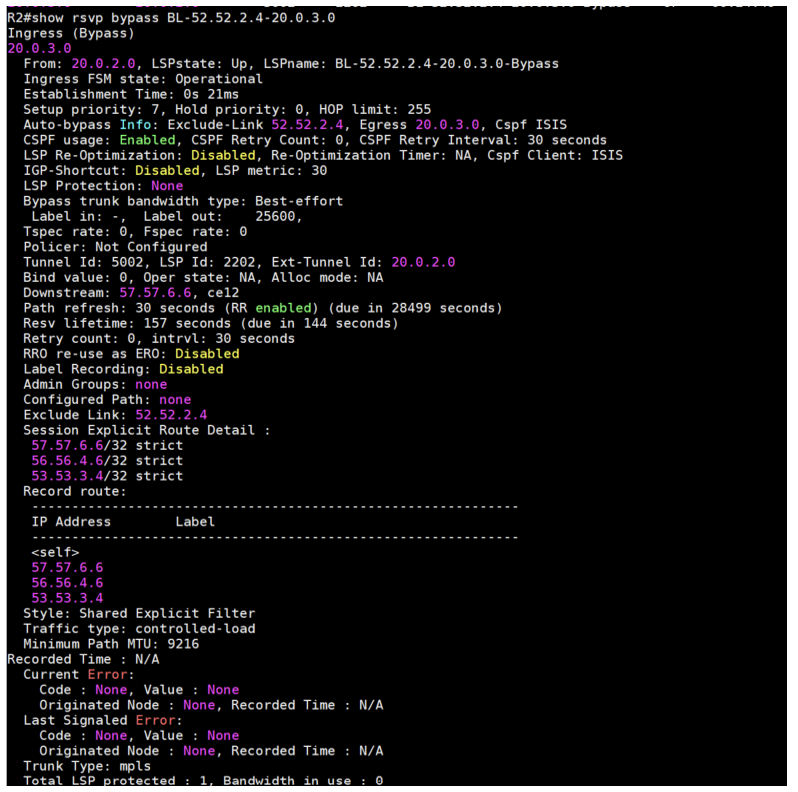
“Show rsvp bypass protected-lsp-list” command displays the RSVP Tunnels mapped with bypass details.

Link Failure:
“show rsvp session up” command displays the details after the failure link at ingress node.

show rsvp session up” command displays the details after the failure link at ingress node.

The Bigger Picture:
MPLS-TE will coexist with SR/SRv6 for years, and RSVP Auto Bypass keeps today’s MPLS backbones resilient during that transition. It delivers proven, sub-second protection for mission-critical traffic and lets operators uphold tighter SLAs (e.g., 99.99%) without re-architecting the network.
Final Thoughts:
Networks aren’t just getting faster—they’re becoming self-healing. RSVP Auto Bypass removes manual failover, delivers sub-second recovery, and frees teams to optimize rather than firefight. In a 5G/IoT/AI world, this level of resilience isn’t optional—it’s the baseline.
Questions? Contact ipisales@ipinfusion.com

Susovan Mahapatra is a Technical Architect for IP Infusion.

